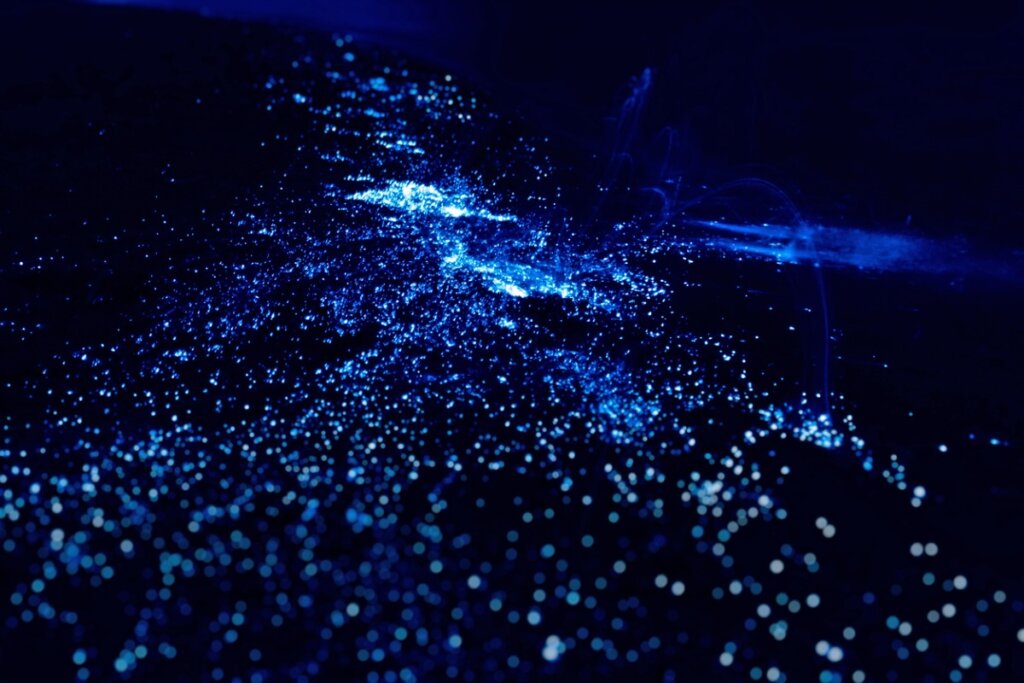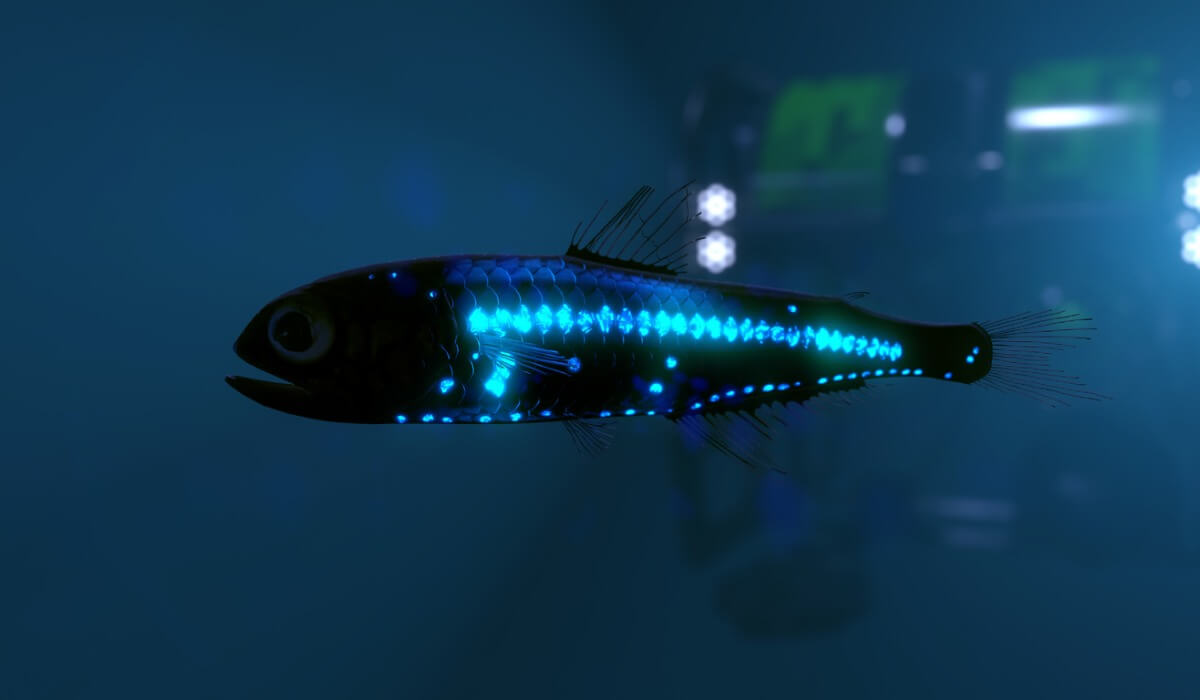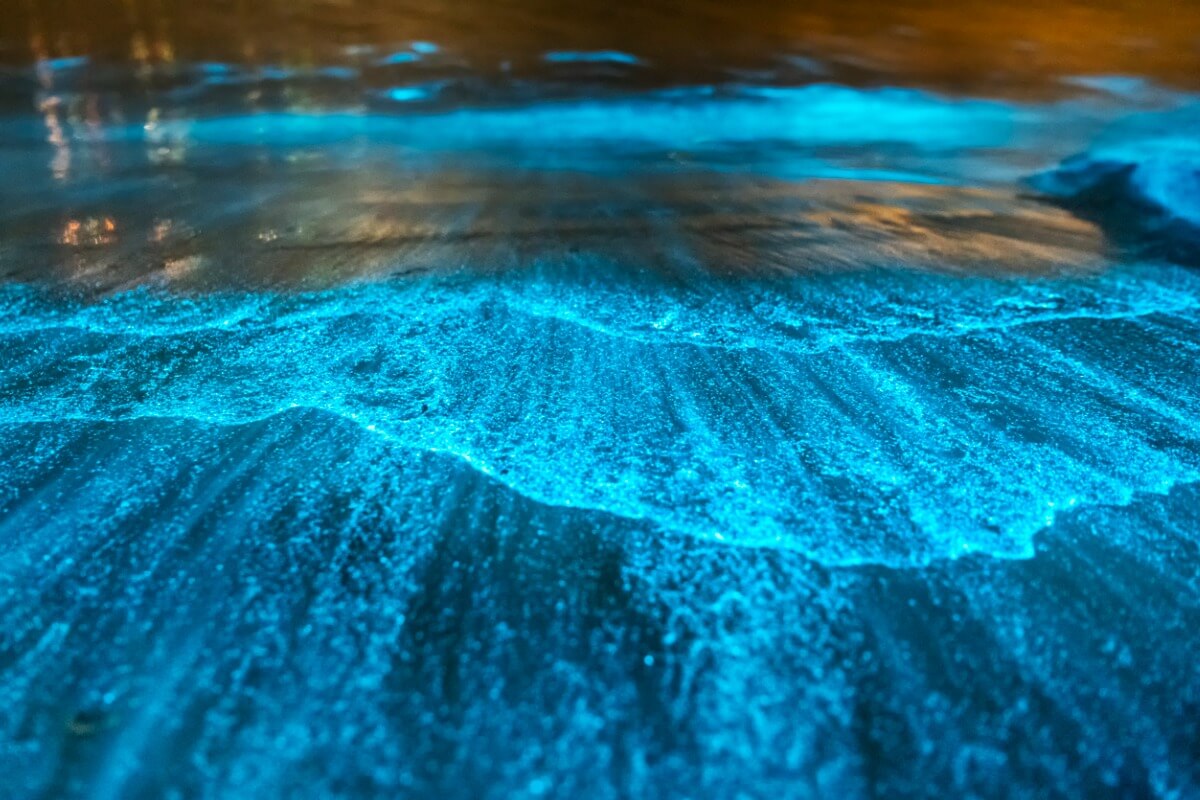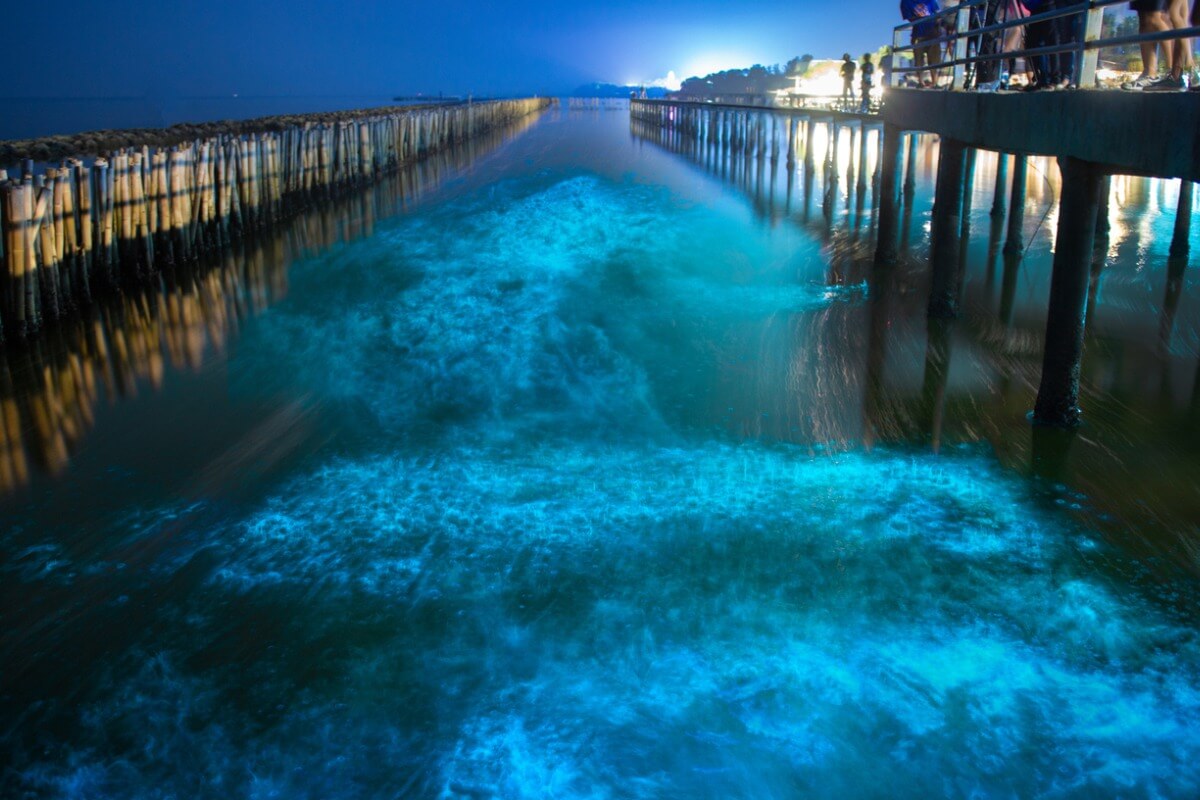The Presence of Bioluminescent Plankton and Algae on the Coasts

Have you ever seen images of beaches glowing neon blue? These images are as astonishing as the explanation behind them: the presence of bioluminescent plankton and algae on the coasts. This emission of light is one of the most fascinating processes that exist in nature.
In this article, you’ll be able to understand how this natural process works and what function it has for organisms that have the ability to shine in this way. Also, if you want to get to know the most famous examples of coastal areas that glow at night, you’re in the right place.
What is bioluminescence?
Bioluminescence is the process by which some living things actively emit light. This isn’t to be confused with biofluorescence, which is a reflection of light. This process can occur in three different ways, which are as follows:
- Intracellularbioluminescence: The light is produced by specialized cells within the animal’s own body. This type of bioluminescence is found in many species of squid.
- Extracellularbioluminescence: This is a process of oxidation of luciferin, which gives rise to the enzyme luciferase. When released to the outside, luciferase produces luminous clouds. Fireflies and some abyssal animals produce light in this way.
- Bioluminescence by symbiosis with luminescent bacteria: Animals that glow by this method control light emission through photophores, small sacs in which they store bioluminescent bacteria.
Bioluminescence has several survival (camouflage and warning) functions, as well as reproductive functions, as it’s part of the courtship process of some species. In certain cases, it’s used to attract prey.

Bioluminescent aquatic microorganisms
Bioluminescent algae don’t emit light constantly, but some kind of energy is needed to produce it (such as the movement of breaking waves against rocks). They don’t always glow blue – some species appear red, green or orange.
The zooplankton that dye the coasts blue don’t glow by themselves, but emit a bioluminescent substance to attract other organisms during the breeding season.
An example of a bioluminescent algae often found in these landscapes is the sea sparkle (Noctiluca). They’re such small organisms that thousands of them can fit in a single drop of water. The function of their bioluminescence would be to scare away predators.
Where are bioluminescent plankton and algae present in the coastal areas?
After you’ve seen photos of these phenomena, you won’t be able to resist visiting these magical landscapes. If you have the opportunity and the means to travel, then here’s a list of places where bioluminescent plankton and algae on the shores is easily visible.
Jervys Bay (Australia)
These bright blue beaches are the main tourist attraction in this area. To make sure you see this phenomenon you should go in the summer months (December-February) and choose as dark a night as possible, even one with a new moon and clouds.
In Preservation Bay (Tasmania, Australia) this phenomenon can also be observed, caused by the Noctiluca scintillans, which turns the water pink during the day.

The Maldives
Between July and December, the beaches of the Maldives turn electric blue at night, especially on the islands of Vaadhoo and Mudhdhoo. And if you decide to visit this country, you can extend your tourism to the rest of the wonderful biodiversity it possesses.
Maya Bay (Thailand)
In fact, the whole area of Krabi has bioluminescent algae. The tourist options range from routes to find this phenomenon in the area, to night snorkelling and swimming in the midst of this colourful spectacle.
Unfortunately (as of the year 2021), Maya Bay is closed to tourists. The goal is to rehabilitate this area on an ecosystemic level.
Holbox (Mexico)
Holbox (“black hole” in Mayan) is an island located in the Yucatan Channel. It’s famous for the special way in which the bioluminescence of its plankton appears. Instead of being a uniform glow, it looks like a sea of stars.
The flashes of light appear when these microorganisms are disturbed by the force of the water, and their glow ranges from blue to silver to greenish.
Toyama Bay (Japan)
Sea fireflies (Vargula hilgendorfii) are responsible for coloring the sea in this region of Japan. One of the most famous images is that of the rocks where streams of these small bioluminescent crustaceans fall.
Vieques (Puerto Rico)
The most bioluminescent location known to date is Mosquito Bay, where at least 6000 bioluminescent algae have been recorded in a tablespoonful of water. The organism responsible for the phenomenon is the Pyrodinium bahamense, a dinoflagellate.

Glimpsing this phenomenon or even taking a swim in waters that light up as you pass by is an experience you can’t forget. However, always remember to respect the place where you’re staying and not to harm its fauna and flora, as being able to enjoy these wonders shouldn’t be the cause for them to disappear forever.
All cited sources were thoroughly reviewed by our team to ensure their quality, reliability, currency, and validity. The bibliography of this article was considered reliable and of academic or scientific accuracy.
- Marta, C. I. S., & Moorillón, G. V. N. (2010). LA BIOLUMINISCENCIA DE MICROORGANISMOS MARINOS Y SU POTENCIAL BIOTECNOLÓGICO. Revista Científica de la Universidad Autónoma de Coahuila, 2(3).
- Biggley, W. H., Swift, E., Buchanan, R. J., & Seliger, H. H. (1969). Stimulable and spontaneous bioluminescence in the marine dinoflagellates, Pyrodinium bahamense, Gonyaulax polyedra, and Pyrocystis lunula. The Journal of general physiology, 54(1), 96-122.https://rupress.org/jgp/article/54/1/96/47351
- Haddock, S. H., Moline, M. A., & Case, J. F. (2010). Bioluminescence in the sea. Annual review of marine science, 2, 443-493.